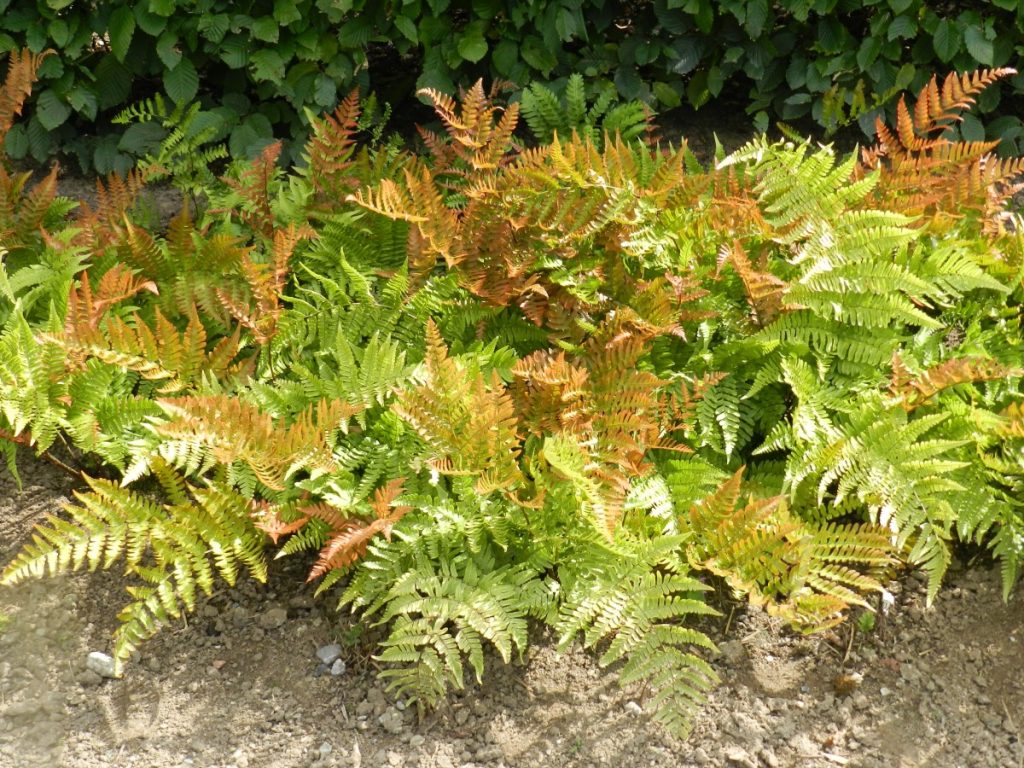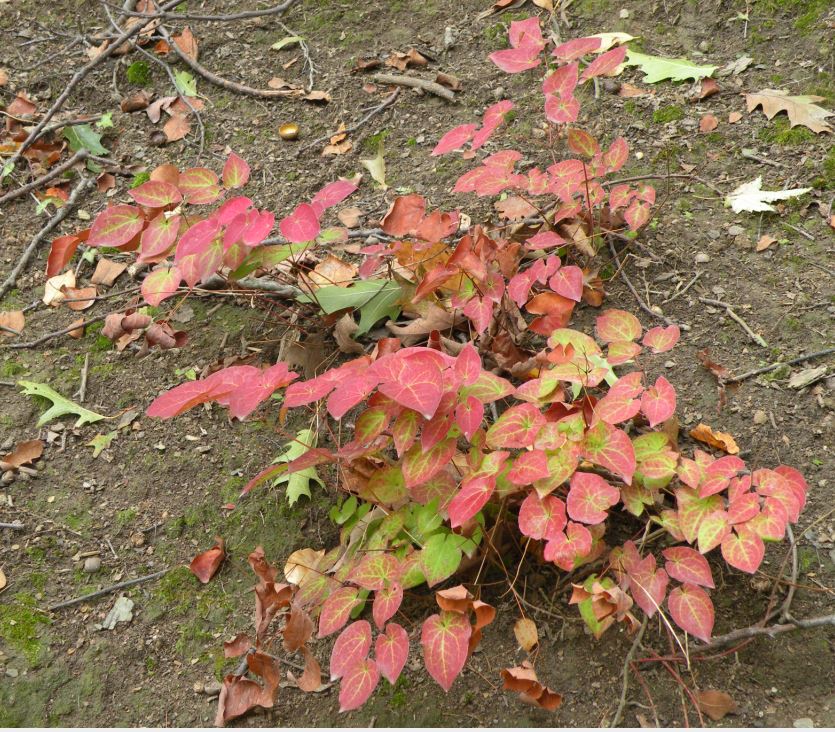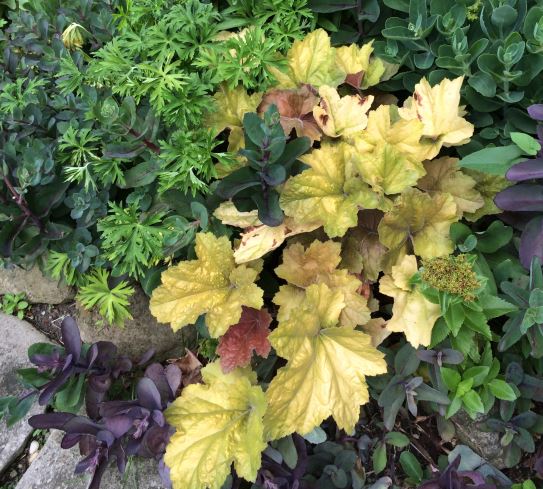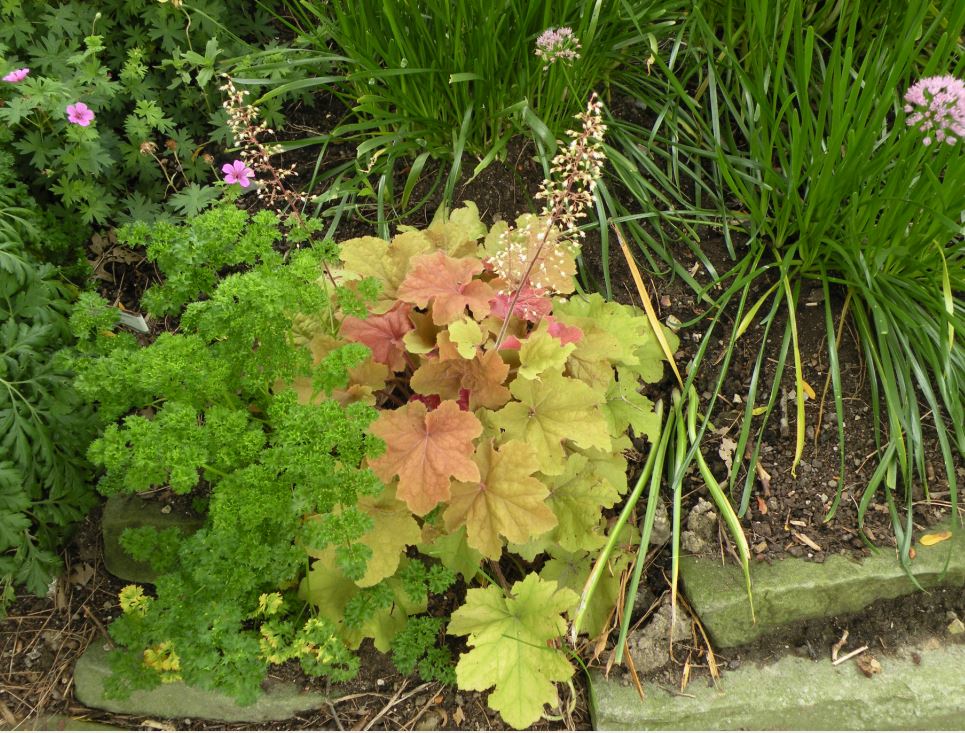By the beginning of September, most gardeners are tired of working in their gardens. They’ve planted the old standbys, asters and chrysanthemums for color. If they are a bit adventurous, they’ve also planted Aconitum (Monkshood), Japanese anemones, Tricyrtis (Japanese Toad Lily) and Sedum
I’d like to suggest that instead of thinking about what will bloom in the fall, more consideration should be given to foliage changes. Just as tree and shrub fall foliage is variable, so too is perennial fall foliage. The color depends on three main factors: light intensity, soil, and temperature.
Cool fall temperatures can also bring out different colors on perennials with ever-present foliage, such as Heuchera and Bergenia.

Dryopteris erythrosora (Autumn Fern) is somewhat misnamed because its new fronds are bronzy orange, whether produced in spring or fall with their cooler temperatures, than in summer when the fronds become green. This two foot fern that loves shade does have a cultivar ‘Brilliance’ but the frond color is no different than that of the species. The difference is the coloration of the spores on the backside of the frond.

A shade groundcover/perennial with excellent fall foliage is Epimedium (Barrenwort). Only twelve inches high at best, it is not an aggressive groundcover but will cover ground eventually. There are so many different ones now that the choice should be based on the spring flower color and the type of flower. In early spring, the foliage is edged and tinged with red, becomes green by summer but acquires shades of orange and red in the fall.

Bergenia (Pigsqueak), another spring bloomer, has large, shiny leaves that turn burgundy or reddish-bronze in the fall and winter. The low-growing, glossy, ovate leaves are slightly toothed and they remain evergreen in zone 6. With climate change now so evident, I suspect that they also remain evergreen in zone 5. In the fall, the leaves take on a purple-bronze color and then turn a more intense burgundy in the winter. Some cultivars such as ‘Winter Glow’ are grown for their stronger winter color. This perennial is usually grown in part shade but can be grown in full sun once well established.

A rarely used shade perennial, suitable only for moist sites, is Rodgersia (Roger’s Flower). All of the species grow three to four high and wide with large leaves and large inflorescences that appear in late June and early July. In the fall, the leaves turn a coppery bronze.



I love Heuchera for its ever-present color that tends to change with the seasons. As an example, I give you Heuchera ‘Southern Comfort’ in July, August, and December.
There are many more perennials with excellent fall foliage but you will have to wait for the next installment to learn about them.


0 Comments